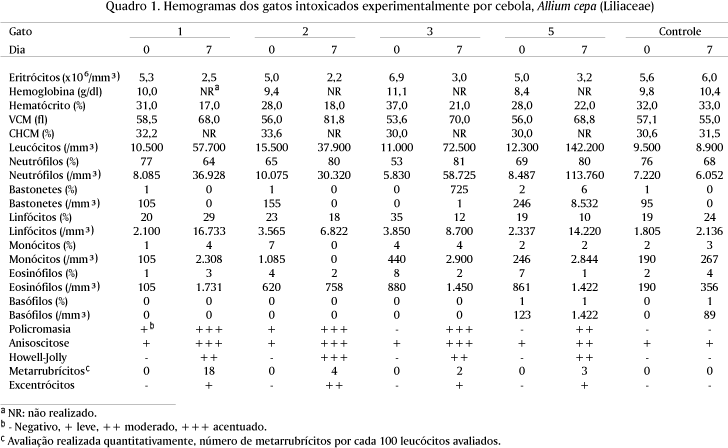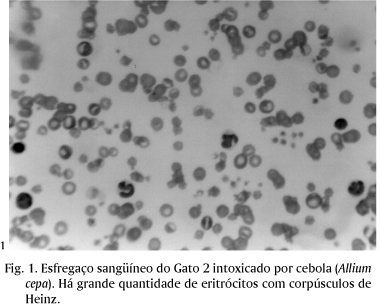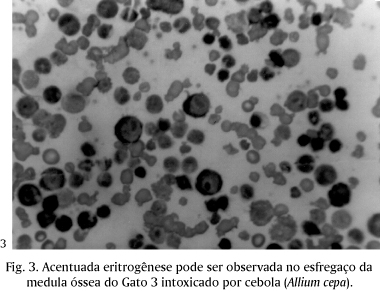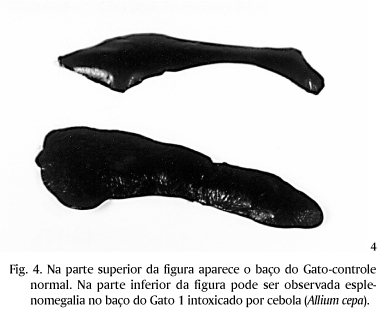Onion poisoning is reported worlwide in several animal species. The toxic principle (n-propyl dissulfide) present in onions causes the transformation of hemoglobin in methemoglobin. In order to study the laboratory, gross and histopathological findings in onion poisoning in cats, five 4-month-old cats were fed a single dose of 10g/kg of dried-onion each. Another cat of the same age did not receive the onion meal and served as control. All five cats developed clinical signs of the toxicosis; one of them died within 24 hours of the ingestion of the onion meal. Clinical signs included apathy, tachycardia, tachypnea, and cyanosis. Laboratory findings included hemolytic anemia associated with Heinz bodies and methemoglobinemia. Main necropsy findings were splenomegaly and brown discoloration of blood. Histopathological findings included splenic and hepatic hemosiderosis and multifocal extramedullary hematopoiesis.
Poisonous plants; Allium cepa; onion; hemolytic anemia; methemoglobinemia; Heinz bodies; diseases of cats; pathology







